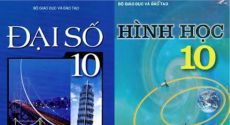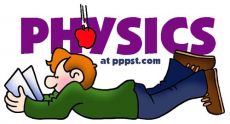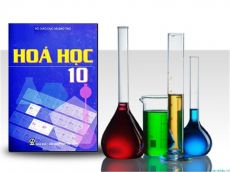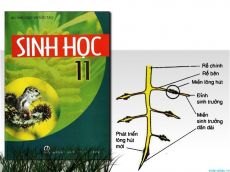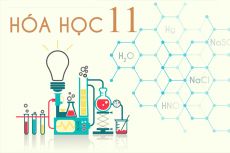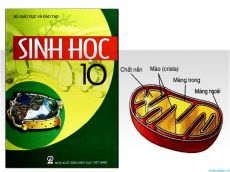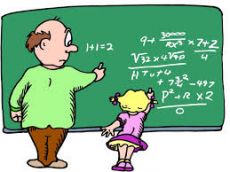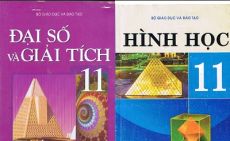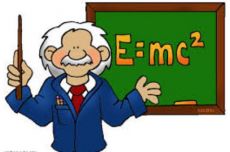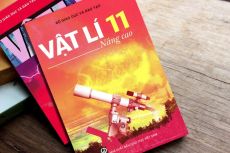Trắc nghiệm Reading Unit 9 lớp 10 Tiếng Anh Lớp 10
-
Câu 1:
Choose the word or phrase (a, b, c or d) that best fits the blank space in the following passage.
People use energy each day for transportation, cooking, heating and cooling rooms, manufacturing, lighting, (31)______, and many other uses. The choices people make about how they use energy – (32)______ machines off when they’re not using them or choosing to buy (33)______ vehicles and energy-efficient appliances – affects the environment and everyone’s lives. What is the difference between energy conservation and energy efficiency? Energy efficiency is using (34)______ that requires less energy to perform the same function. Using a compact (35) ________ light bulb that requires less energy instead of using an incandescent bulb to produce the same amount of light is an (36)____ of energy efficiency. Energy conservation is any behavior that results in the use of (37)_____ energy. Turning the lights off when leaving the room and (38)______ aluminum cans are both ways of conserving energy.
35_____________A. electric
B. halogen
C. unshaded
D. fluorescent
-
Câu 2:
Choose the word or phrase (a, b, c or d) that best fits the blank space in the following passage.
People use energy each day for transportation, cooking, heating and cooling rooms, manufacturing, lighting, (31)______, and many other uses. The choices people make about how they use energy – (32)______ machines off when they’re not using them or choosing to buy (33)______ vehicles and energy-efficient appliances – affects the environment and everyone’s lives. What is the difference between energy conservation and energy efficiency? Energy efficiency is using (34)______ that requires less energy to perform the same function. Using a compact (35) ________ light bulb that requires less energy instead of using an incandescent bulb to produce the same amount of light is an (36)____ of energy efficiency. Energy conservation is any behavior that results in the use of (37)_____ energy. Turning the lights off when leaving the room and (38)______ aluminum cans are both ways of conserving energy.
34___________
A. programme
B. technology
C. method
D. system
-
Câu 3:
Choose the word or phrase (a, b, c or d) that best fits the blank space in the following passage.
People use energy each day for transportation, cooking, heating and cooling rooms, manufacturing, lighting, (31)______, and many other uses. The choices people make about how they use energy – (32)______ machines off when they’re not using them or choosing to buy (33)______ vehicles and energy-efficient appliances – affects the environment and everyone’s lives. What is the difference between energy conservation and energy efficiency? Energy efficiency is using (34)______ that requires less energy to perform the same function. Using a compact (35) ________ light bulb that requires less energy instead of using an incandescent bulb to produce the same amount of light is an (36)____ of energy efficiency. Energy conservation is any behavior that results in the use of (37)_____ energy. Turning the lights off when leaving the room and (38)______ aluminum cans are both ways of conserving energy.
33.___________
A. economic
B. fuel-efficient
C. commercial
D. petrol-driver
-
Câu 4:
Choose the word or phrase (a, b, c or d) that best fits the blank space in the following passage.
People use energy each day for transportation, cooking, heating and cooling rooms, manufacturing, lighting, (31)______, and many other uses. The choices people make about how they use energy – (32)______ machines off when they’re not using them or choosing to buy (33)______ vehicles and energy-efficient appliances – affects the environment and everyone’s lives. What is the difference between energy conservation and energy efficiency? Energy efficiency is using (34)______ that requires less energy to perform the same function. Using a compact (35) ________ light bulb that requires less energy instead of using an incandescent bulb to produce the same amount of light is an (36)____ of energy efficiency. Energy conservation is any behavior that results in the use of (37)_____ energy. Turning the lights off when leaving the room and (38)______ aluminum cans are both ways of conserving energy.
32___________
A. taking
B. driving
C. turning
D. making
-
Câu 5:
Choose the word or phrase (a, b, c or d) that best fits the blank space in the following passage.
People use energy each day for transportation, cooking, heating and cooling rooms, manufacturing, lighting, (31)______, and many other uses. The choices people make about how they use energy – (32)______ machines off when they’re not using them or choosing to buy (33)______ vehicles and energy-efficient appliances – affects the environment and everyone’s lives. What is the difference between energy conservation and energy efficiency? Energy efficiency is using (34)______ that requires less energy to perform the same function. Using a compact (35) ________ light bulb that requires less energy instead of using an incandescent bulb to produce the same amount of light is an (36)____ of energy efficiency. Energy conservation is any behavior that results in the use of (37)_____ energy. Turning the lights off when leaving the room and (38)______ aluminum cans are both ways of conserving energy.
31______________
A. entertainment
B. entertaining
C. entertainer
D. entertain
-
Câu 6:
Choose the word or phrase (a, b, c or d) that best fits the blank space in the following passage.
People use energy each day for transportation, cooking, heating and cooling rooms, manufacturing, lighting, (31)______, and many other uses. The choices people make about how they use energy – (32)______ machines off when they’re not using them or choosing to buy (33)______ vehicles and energy-efficient appliances – affects the environment and everyone’s lives. What is the difference between energy conservation and energy efficiency? Energy efficiency is using (34)______ that requires less energy to perform the same function. Using a compact (35) ________ light bulb that requires less energy instead of using an incandescent bulb to produce the same amount of light is an (36)____ of energy efficiency. Energy conservation is any behavior that results in the use of (37)_____ energy. Turning the lights off when leaving the room and (38)______ aluminum cans are both ways of conserving energy.
31_______________
A. entertainment
B. entertaining
C. entertainer
D. entertain
-
Câu 7:
Choose the word or phrase (a, b, c or d) that best fits the blank space in the following passage.
A 9.0 – 9.1 magnitude (31)_______ followed by a tsunami hit the east coast of Japan on March 11, 2011. With an underwater depth of 29 km, this was the largest earthquake to ever (32)_______ Japan in recorded history. Documented as the 4th most powerful earthquake in the world, it was (33)_________ for the death of 15,894 people with 6,152 injured and 2,562 people (34)________ . It also affected 20 prefectures, with over 127,000 buildings (35)________ destroyed and over 272,000 buildings “half collapsed”. The earthquake also caused a near nuclear (36)___________ when there was a partial meltdown in 3 (37)__________ of the Fukushima Daiichi nuclear power plant, (38)____ is the 2nd largest nuclear disaster after Chernobyl.
38_______________
A. which
B. that
C. where
D. it
-
Câu 8:
Choose the word or phrase (a, b, c or d) that best fits the blank space in the following passage.
A 9.0 – 9.1 magnitude (31)_______ followed by a tsunami hit the east coast of Japan on March 11, 2011. With an underwater depth of 29 km, this was the largest earthquake to ever (32)_______ Japan in recorded history. Documented as the 4th most powerful earthquake in the world, it was (33)_________ for the death of 15,894 people with 6,152 injured and 2,562 people (34)________ . It also affected 20 prefectures, with over 127,000 buildings (35)________ destroyed and over 272,000 buildings “half collapsed”. The earthquake also caused a near nuclear (36)___________ when there was a partial meltdown in 3 (37)__________ of the Fukushima Daiichi nuclear power plant, (38)____ is the 2nd largest nuclear disaster after Chernobyl.
37____________
A. contributors
B. controllers
C. stationers
D. reactors
-
Câu 9:
Choose the word or phrase (a, b, c or d) that best fits the blank space in the following passage.
A 9.0 – 9.1 magnitude (31)_______ followed by a tsunami hit the east coast of Japan on March 11, 2011. With an underwater depth of 29 km, this was the largest earthquake to ever (32)_______ Japan in recorded history. Documented as the 4th most powerful earthquake in the world, it was (33)_________ for the death of 15,894 people with 6,152 injured and 2,562 people (34)________ . It also affected 20 prefectures, with over 127,000 buildings (35)________ destroyed and over 272,000 buildings “half collapsed”. The earthquake also caused a near nuclear (36)___________ when there was a partial meltdown in 3 (37)__________ of the Fukushima Daiichi nuclear power plant, (38)____ is the 2nd largest nuclear disaster after Chernobyl.
36______________
A. energy
B. disaster
C. weapon
D. waste
-
Câu 10:
Choose the word or phrase (a, b, c or d) that best fits the blank space in the following passage.
A 9.0 – 9.1 magnitude (31)_______ followed by a tsunami hit the east coast of Japan on March 11, 2011. With an underwater depth of 29 km, this was the largest earthquake to ever (32)_______ Japan in recorded history. Documented as the 4th most powerful earthquake in the world, it was (33)_________ for the death of 15,894 people with 6,152 injured and 2,562 people (34)________ . It also affected 20 prefectures, with over 127,000 buildings (35)________ destroyed and over 272,000 buildings “half collapsed”. The earthquake also caused a near nuclear (36)___________ when there was a partial meltdown in 3 (37)__________ of the Fukushima Daiichi nuclear power plant, (38)____ is the 2nd largest nuclear disaster after Chernobyl.
35__________-
A. strongly
B. fully
C. completely
D. frequently
-
Câu 11:
Choose the word or phrase (a, b, c or d) that best fits the blank space in the following passage.
A 9.0 – 9.1 magnitude (31)_______ followed by a tsunami hit the east coast of Japan on March 11, 2011. With an underwater depth of 29 km, this was the largest earthquake to ever (32)_______ Japan in recorded history. Documented as the 4th most powerful earthquake in the world, it was (33)_________ for the death of 15,894 people with 6,152 injured and 2,562 people (34)________ . It also affected 20 prefectures, with over 127,000 buildings (35)________ destroyed and over 272,000 buildings “half collapsed”. The earthquake also caused a near nuclear (36)___________ when there was a partial meltdown in 3 (37)__________ of the Fukushima Daiichi nuclear power plant, (38)____ is the 2nd largest nuclear disaster after Chernobyl.
34_____________
A. missing
B. crossing
C. passing
D. including
-
Câu 12:
Choose the word or phrase (a, b, c or d) that best fits the blank space in the following passage.
A 9.0 – 9.1 magnitude (31)_______ followed by a tsunami hit the east coast of Japan on March 11, 2011. With an underwater depth of 29 km, this was the largest earthquake to ever (32)_______ Japan in recorded history. Documented as the 4th most powerful earthquake in the world, it was (33)_________ for the death of 15,894 people with 6,152 injured and 2,562 people (34)________ . It also affected 20 prefectures, with over 127,000 buildings (35)________ destroyed and over 272,000 buildings “half collapsed”. The earthquake also caused a near nuclear (36)___________ when there was a partial meltdown in 3 (37)__________ of the Fukushima Daiichi nuclear power plant, (38)____ is the 2nd largest nuclear disaster after Chernobyl.
33___________
A. resulted
B. sensible
C. reliable
D. responsible
-
Câu 13:
Choose the word or phrase (a, b, c or d) that best fits the blank space in the following passage.
A 9.0 – 9.1 magnitude (31)_______ followed by a tsunami hit the east coast of Japan on March 11, 2011. With an underwater depth of 29 km, this was the largest earthquake to ever (32)_______ Japan in recorded history. Documented as the 4th most powerful earthquake in the world, it was (33)_________ for the death of 15,894 people with 6,152 injured and 2,562 people (34)________ . It also affected 20 prefectures, with over 127,000 buildings (35)________ destroyed and over 272,000 buildings “half collapsed”. The earthquake also caused a near nuclear (36)___________ when there was a partial meltdown in 3 (37)__________ of the Fukushima Daiichi nuclear power plant, (38)____ is the 2nd largest nuclear disaster after Chernobyl.
32___________
A. occur
B. shake
C. strike
D. destroy
-
Câu 14:
Choose the word or phrase (a, b, c or d) that best fits the blank space in the following passage.
A 9.0 – 9.1 magnitude (31)_______ followed by a tsunami hit the east coast of Japan on March 11, 2011. With an underwater depth of 29 km, this was the largest earthquake to ever (32)_______ Japan in recorded history. Documented as the 4th most powerful earthquake in the world, it was (33)_________ for the death of 15,894 people with 6,152 injured and 2,562 people (34)________ . It also affected 20 prefectures, with over 127,000 buildings (35)________ destroyed and over 272,000 buildings “half collapsed”. The earthquake also caused a near nuclear (36)___________ when there was a partial meltdown in 3 (37)__________ of the Fukushima Daiichi nuclear power plant, (38)____ is the 2nd largest nuclear disaster after Chernobyl.
31___________
A. hurricane
B. earthquake
C. typhoon
D. cyclone
-
Câu 15:
Choose the word or phrase (a, b, c or d) that best fits the blank space in the following passage.
Online gaming site Roiworld (31)________ 600 teens ages 13 to 17 in late April and found that teens spend two hours per day online on average, 80% of which is spent using a (32)________ network. These same teens are, however, showing signs of “Facebook Fatigue.” Nearly one in five (19%) who have an account (33)_____ visit Facebook or are using it less. Of the group that are saying goodbye to Facebook, 45% have (34)______________ interest, 16% are leaving because their parents are there, 14% say there are “too many adults/older people” and 13% are concerned about the (35)____________ of their personal information. While interest in Facebook may be waning, it’s still the most popular social network (36)_____ teens – 78% have created a profile and 69% still use it. YouTube (37)____ second; 64% of teens claim to have a YouTube profile and continue to use the site. MySpace comes in a distant third (41%) and Twitter takes the fourth (38)___________(20%).
38.______________
A. way
B. spot
C. line
D. rate
-
Câu 16:
Choose the word or phrase (a, b, c or d) that best fits the blank space in the following passage.
Online gaming site Roiworld (31)________ 600 teens ages 13 to 17 in late April and found that teens spend two hours per day online on average, 80% of which is spent using a (32)________ network. These same teens are, however, showing signs of “Facebook Fatigue.” Nearly one in five (19%) who have an account (33)_____ visit Facebook or are using it less. Of the group that are saying goodbye to Facebook, 45% have (34)______________ interest, 16% are leaving because their parents are there, 14% say there are “too many adults/older people” and 13% are concerned about the (35)____________ of their personal information. While interest in Facebook may be waning, it’s still the most popular social network (36)_____ teens – 78% have created a profile and 69% still use it. YouTube (37)____ second; 64% of teens claim to have a YouTube profile and continue to use the site. MySpace comes in a distant third (41%) and Twitter takes the fourth (38)___________(20%).
37______________
A. ranks
B. achieves
C. takes
D. offers
-
Câu 17:
Choose the word or phrase (a, b, c or d) that best fits the blank space in the following passage.
Online gaming site Roiworld (31)________ 600 teens ages 13 to 17 in late April and found that teens spend two hours per day online on average, 80% of which is spent using a (32)________ network. These same teens are, however, showing signs of “Facebook Fatigue.” Nearly one in five (19%) who have an account (33)_____ visit Facebook or are using it less. Of the group that are saying goodbye to Facebook, 45% have (34)______________ interest, 16% are leaving because their parents are there, 14% say there are “too many adults/older people” and 13% are concerned about the (35)____________ of their personal information. While interest in Facebook may be waning, it’s still the most popular social network (36)_____ teens – 78% have created a profile and 69% still use it. YouTube (37)____ second; 64% of teens claim to have a YouTube profile and continue to use the site. MySpace comes in a distant third (41%) and Twitter takes the fourth (38)___________(20%).
36______________
A. within
B. between
C. among
D. around
-
Câu 18:
Choose the word or phrase (a, b, c or d) that best fits the blank space in the following passage.
Online gaming site Roiworld (31)________ 600 teens ages 13 to 17 in late April and found that teens spend two hours per day online on average, 80% of which is spent using a (32)________ network. These same teens are, however, showing signs of “Facebook Fatigue.” Nearly one in five (19%) who have an account (33)_____ visit Facebook or are using it less. Of the group that are saying goodbye to Facebook, 45% have (34)______________ interest, 16% are leaving because their parents are there, 14% say there are “too many adults/older people” and 13% are concerned about the (35)____________ of their personal information. While interest in Facebook may be waning, it’s still the most popular social network (36)_____ teens – 78% have created a profile and 69% still use it. YouTube (37)____ second; 64% of teens claim to have a YouTube profile and continue to use the site. MySpace comes in a distant third (41%) and Twitter takes the fourth (38)___________(20%).
35___________
A. firmness
B. public
C. source
D. privacy
-
Câu 19:
Choose the word or phrase (a, b, c or d) that best fits the blank space in the following passage.
Online gaming site Roiworld (31)________ 600 teens ages 13 to 17 in late April and found that teens spend two hours per day online on average, 80% of which is spent using a (32)________ network. These same teens are, however, showing signs of “Facebook Fatigue.” Nearly one in five (19%) who have an account (33)_____ visit Facebook or are using it less. Of the group that are saying goodbye to Facebook, 45% have (34)______________ interest, 16% are leaving because their parents are there, 14% say there are “too many adults/older people” and 13% are concerned about the (35)____________ of their personal information. While interest in Facebook may be waning, it’s still the most popular social network (36)_____ teens – 78% have created a profile and 69% still use it. YouTube (37)____ second; 64% of teens claim to have a YouTube profile and continue to use the site. MySpace comes in a distant third (41%) and Twitter takes the fourth (38)___________(20%).
34._____________
A. developed
B. lost
C. taken
D. pursued
-
Câu 20:
Choose the word or phrase (a, b, c or d) that best fits the blank space in the following passage.
Online gaming site Roiworld (31)________ 600 teens ages 13 to 17 in late April and found that teens spend two hours per day online on average, 80% of which is spent using a (32)________ network. These same teens are, however, showing signs of “Facebook Fatigue.” Nearly one in five (19%) who have an account (33)_____ visit Facebook or are using it less. Of the group that are saying goodbye to Facebook, 45% have (34)______________ interest, 16% are leaving because their parents are there, 14% say there are “too many adults/older people” and 13% are concerned about the (35)____________ of their personal information. While interest in Facebook may be waning, it’s still the most popular social network (36)_____ teens – 78% have created a profile and 69% still use it. YouTube (37)____ second; 64% of teens claim to have a YouTube profile and continue to use the site. MySpace comes in a distant third (41%) and Twitter takes the fourth (38)___________(20%).
33_____________
A. no longer
B. any more
C. once more
D. any time
-
Câu 21:
Choose the word or phrase (a, b, c or d) that best fits the blank space in the following passage.
Online gaming site Roiworld (31)________ 600 teens ages 13 to 17 in late April and found that teens spend two hours per day online on average, 80% of which is spent using a (32)________ network. These same teens are, however, showing signs of “Facebook Fatigue.” Nearly one in five (19%) who have an account (33)_____ visit Facebook or are using it less. Of the group that are saying goodbye to Facebook, 45% have (34)______________ interest, 16% are leaving because their parents are there, 14% say there are “too many adults/older people” and 13% are concerned about the (35)____________ of their personal information. While interest in Facebook may be waning, it’s still the most popular social network (36)_____ teens – 78% have created a profile and 69% still use it. YouTube (37)____ second; 64% of teens claim to have a YouTube profile and continue to use the site. MySpace comes in a distant third (41%) and Twitter takes the fourth (38)___________(20%).
32_____________
A. common
B. supportive
C. national
D. social
-
Câu 22:
Choose the word or phrase (a, b, c or d) that best fits the blank space in the following passage.
Online gaming site Roiworld (31)________ 600 teens ages 13 to 17 in late April and found that teens spend two hours per day online on average, 80% of which is spent using a (32)________ network. These same teens are, however, showing signs of “Facebook Fatigue.” Nearly one in five (19%) who have an account (33)_____ visit Facebook or are using it less. Of the group that are saying goodbye to Facebook, 45% have (34)______________ interest, 16% are leaving because their parents are there, 14% say there are “too many adults/older people” and 13% are concerned about the (35)____________ of their personal information. While interest in Facebook may be waning, it’s still the most popular social network (36)_____ teens – 78% have created a profile and 69% still use it. YouTube (37)____ second; 64% of teens claim to have a YouTube profile and continue to use the site. MySpace comes in a distant third (41%) and Twitter takes the fourth (38)___________(20%).
31______________
A. worked
B. suggested
C. surveyed
D. admited
-
Câu 23:
Read the passage below carefully and choose the correct answer a, b, c, or d.
I get a lot of letters at this time of the year from people complaining that they have a cold that won’t go away. There are so many different stories about how to prevent or cure a cold that it’s often difficult to know what to do. Although colds are rarely dangerous, except for people who are already weak, such as the elderly or young babies, they are always uncomfortable and usually most unpleasant. Of course, you can buy lots of medicines which will help to make your cold less unpleasant, but you must remember that nothing can cure a cold or make it go away faster. Another thing is that any medicine which is strong enough to make you feel better could be dangerous if you are already taking drugs for some other illness so always with your chemist or doctor to see whether they are all right for you. And remember they might make you sleepy – please don’t try to drive if they do! Lastly, as far as avoiding colds is concerned, whatever you may be told about magic foods or drinks, the best answer is to keep strong and healthy – you’ll have less chance of catching a cold, and if you do, it shouldn’t be so bad!
Which of the following is NOT true?
A. Colds are not very often dangerous.
B. Colds cannot be cured or prevented.
C. Colds are uncomfortable and unpleasant.
D. Colds might make you sleepy.
-
Câu 24:
Read the passage below carefully and choose the correct answer a, b, c, or d.
I get a lot of letters at this time of the year from people complaining that they have a cold that won’t go away. There are so many different stories about how to prevent or cure a cold that it’s often difficult to know what to do. Although colds are rarely dangerous, except for people who are already weak, such as the elderly or young babies, they are always uncomfortable and usually most unpleasant. Of course, you can buy lots of medicines which will help to make your cold less unpleasant, but you must remember that nothing can cure a cold or make it go away faster. Another thing is that any medicine which is strong enough to make you feel better could be dangerous if you are already taking drugs for some other illness so always with your chemist or doctor to see whether they are all right for you. And remember they might make you sleepy – please don’t try to drive if they do! Lastly, as far as avoiding colds is concerned, whatever you may be told about magic foods or drinks, the best answer is to keep strong and healthy – you’ll have less chance of catching a cold, and if you do, it shouldn’t be so bad!
What is the writer’s opinion of ‘magic food and drink’?
A. The writer believes in it.
B. The writer doesn’t believe in it.
C. The writer is concerned about it.
D. The writer is interested in it.
-
Câu 25:
Read the passage below carefully and choose the correct answer a, b, c, or d.
I get a lot of letters at this time of the year from people complaining that they have a cold that won’t go away. There are so many different stories about how to prevent or cure a cold that it’s often difficult to know what to do. Although colds are rarely dangerous, except for people who are already weak, such as the elderly or young babies, they are always uncomfortable and usually most unpleasant. Of course, you can buy lots of medicines which will help to make your cold less unpleasant, but you must remember that nothing can cure a cold or make it go away faster. Another thing is that any medicine which is strong enough to make you feel better could be dangerous if you are already taking drugs for some other illness so always with your chemist or doctor to see whether they are all right for you. And remember they might make you sleepy – please don’t try to drive if they do! Lastly, as far as avoiding colds is concerned, whatever you may be told about magic foods or drinks, the best answer is to keep strong and healthy – you’ll have less chance of catching a cold, and if you do, it shouldn’t be so bad!
Who should talk to the doctor before buying medicine for a cold?
A. People who are already weak.
B. People who catch a bad cold
C. People who drive to work.
D. People who are already taking drugs.
-
Câu 26:
Read the passage below carefully and choose the correct answer a, b, c, or d.
I get a lot of letters at this time of the year from people complaining that they have a cold that won’t go away. There are so many different stories about how to prevent or cure a cold that it’s often difficult to know what to do. Although colds are rarely dangerous, except for people who are already weak, such as the elderly or young babies, they are always uncomfortable and usually most unpleasant. Of course, you can buy lots of medicines which will help to make your cold less unpleasant, but you must remember that nothing can cure a cold or make it go away faster. Another thing is that any medicine which is strong enough to make you feel better could be dangerous if you are already taking drugs for some other illness so always with your chemist or doctor to see whether they are all right for you. And remember they might make you sleepy – please don’t try to drive if they do! Lastly, as far as avoiding colds is concerned, whatever you may be told about magic foods or drinks, the best answer is to keep strong and healthy – you’ll have less chance of catching a cold, and if you do, it shouldn’t be so bad!
What is the writer’s intention?
A. to write in an amusing way
B. to give general advice
C. to complain about colds
D. to describe a personal experience
-
Câu 27:
Read the passage below carefully and choose the correct answer a, b, c, or d.
I get a lot of letters at this time of the year from people complaining that they have a cold that won’t go away. There are so many different stories about how to prevent or cure a cold that it’s often difficult to know what to do. Although colds are rarely dangerous, except for people who are already weak, such as the elderly or young babies, they are always uncomfortable and usually most unpleasant. Of course, you can buy lots of medicines which will help to make your cold less unpleasant, but you must remember that nothing can cure a cold or make it go away faster. Another thing is that any medicine which is strong enough to make you feel better could be dangerous if you are already taking drugs for some other illness so always with your chemist or doctor to see whether they are all right for you. And remember they might make you sleepy – please don’t try to drive if they do! Lastly, as far as avoiding colds is concerned, whatever you may be told about magic foods or drinks, the best answer is to keep strong and healthy – you’ll have less chance of catching a cold, and if you do, it shouldn’t be so bad!
This is from__________ .
A. doctor’s notebook
B. a diary
C. a magazine
D. a school biology book
-
Câu 28:
Choose the word or phrase (a, b, c or d) that best fits the blank space in the following passage.
Most of the energy we use today (31)_______ from coal, oil, and gas. But these will not last forever, and burning them is slowly harming the (32)___________. We need to (33)_______ other ways of supplying energy. Solar Power is a way of using the (34)_______ energy as heat or to make electricity. We can also use wind-power by building modern (35)_______ that spin in the wind. There are several types of water power: river water in mountainous areas can (36)_______ to generate hydroelectric power, and we can also create electricity (37)_______ seawater flowing in and out with the (38)_______.
38._____________
A. crests
B. ways
C. waves
D. tides
-
Câu 29:
Choose the word or phrase (a, b, c or d) that best fits the blank space in the following passage.
Most of the energy we use today (31)_______ from coal, oil, and gas. But these will not last forever, and burning them is slowly harming the (32)___________. We need to (33)_______ other ways of supplying energy. Solar Power is a way of using the (34)_______ energy as heat or to make electricity. We can also use wind-power by building modern (35)_______ that spin in the wind. There are several types of water power: river water in mountainous areas can (36)_______ to generate hydroelectric power, and we can also create electricity (37)_______ seawater flowing in and out with the (38)_______.
37_____________
A. in
B. for
C. by
D. from
-
Câu 30:
Choose the word or phrase (a, b, c or d) that best fits the blank space in the following passage.
Most of the energy we use today (31)_______ from coal, oil, and gas. But these will not last forever, and burning them is slowly harming the (32)___________. We need to (33)_______ other ways of supplying energy. Solar Power is a way of using the (34)_______ energy as heat or to make electricity. We can also use wind-power by building modern (35)_______ that spin in the wind. There are several types of water power: river water in mountainous areas can (36)_______ to generate hydroelectric power, and we can also create electricity (37)_______ seawater flowing in and out with the (38)_______.
36___________
A. use
B. using
C. be used
D. to use
-
Câu 31:
Choose the word or phrase (a, b, c or d) that best fits the blank space in the following passage.
Most of the energy we use today (31)_______ from coal, oil, and gas. But these will not last forever, and burning them is slowly harming the (32)___________. We need to (33)_______ other ways of supplying energy. Solar Power is a way of using the (34)_______ energy as heat or to make electricity. We can also use wind-power by building modern (35)_______ that spin in the wind. There are several types of water power: river water in mountainous areas can (36)_______ to generate hydroelectric power, and we can also create electricity (37)_______ seawater flowing in and out with the (38)_______.
35___________
A. windbreaks
B. windmills
C. wind tunnels
D. wind chimes
-
Câu 32:
Choose the word or phrase (a, b, c or d) that best fits the blank space in the following passage.
Most of the energy we use today (31)_______ from coal, oil, and gas. But these will not last forever, and burning them is slowly harming the (32)___________. We need to (33)_______ other ways of supplying energy. Solar Power is a way of using the (34)_______ energy as heat or to make electricity. We can also use wind-power by building modern (35)_______ that spin in the wind. There are several types of water power: river water in mountainous areas can (36)_______ to generate hydroelectric power, and we can also create electricity (37)_______ seawater flowing in and out with the (38)_______.
34____________
A. sun’s
B. moon’s
C. star’s
D. earth’s
-
Câu 33:
Choose the word or phrase (a, b, c or d) that best fits the blank space in the following passage.
Most of the energy we use today (31)_______ from coal, oil, and gas. But these will not last forever, and burning them is slowly harming the (32)___________. We need to (33)_______ other ways of supplying energy. Solar Power is a way of using the (34)_______ energy as heat or to make electricity. We can also use wind-power by building modern (35)_______ that spin in the wind. There are several types of water power: river water in mountainous areas can (36)_______ to generate hydroelectric power, and we can also create electricity (37)_______ seawater flowing in and out with the (38)_______.
33.___________
A. look after
B. look into
C. look at
D. look for
-
Câu 34:
Choose the word or phrase (a, b, c or d) that best fits the blank space in the following passage.
Most of the energy we use today (31)_______ from coal, oil, and gas. But these will not last forever, and burning them is slowly harming the (32)___________We need to (33)_______ other ways of supplying energy. Solar Power is a way of using the (34)_______ energy as heat or to make electricity. We can also use wind-power by building modern (35)_______ that spin in the wind. There are several types of water power: river water in mountainous areas can (36)_______ to generate hydroelectric power, and we can also create electricity (37)_______ seawater flowing in and out with the (38)_______
32______
A. soil
B. atmosphere
C. water
D. resources
-
Câu 35:
Choose the word or phrase (a, b, c or d) that best fits the blank space in the following passage.
Most of the energy we use today (31)_______ from coal, oil, and gas. But these will not last forever, and burning them is slowly harming the (32)___________We need to (33)_______ other ways of supplying energy. Solar Power is a way of using the (34)_______ energy as heat or to make electricity. We can also use wind-power by building modern (35)_______ that spin in the wind. There are several types of water power: river water in mountainous areas can (36)_______ to generate hydroelectric power, and we can also create electricity (37)_______ seawater flowing in and out with the (38)_______
31____________
A. makes
B. creates
C. comes
D. begins
-
Câu 36:
Read the passage and choose the correct answer to each question:
Europa is the smallest of planet Jupiter’s four largest moons and the second moon out from Jupiter. Until 1979, it was just another astronomy textbook statistic. Then came the close-up images obtained by the exploratory spacecraft Voyager 2, and within days, Europa was transformed into one of the solar system’s most intriguing worlds. The biggest initial surprise was the almost total lack of detail, especially from far away. Even at close range, the only visible features are thin, kinked brown lines resembling cracks in an eggshell. And this analogy is not far off the mark.
The surface of Europa is almost pure water ice, but a nearly complete absence of craters indicates that Europa’s surface ice resembles Earth’s Antarctic ice cap. The eggshell analogy may be quite accurate since the ice could be as little as a few kilometers thick – a true shell around what is likely a subsurface liquid ocean that, in turn, encases a rocky core. The interior of Europa has been kept warm over the eons by tidal forces generated by the varying gravitational tugs of the other big moons as they wheel around Jupiter. The tides on Europa pull and relax in an endless cycle. The resulting internal heat keeps what would otherwise be ice melted almost to the surface. The crack-like marks on Europa’s icy face appear to fracture where water or slush oozes from below.
Soon after Voyager 2’s encounter with Jupiter in 1979, when the best images of Europa were obtained, researchers advanced the startling idea that Europa’s subsurface ocean might harbor life. Life processes could have begun when Jupiter was releasing a vast store of internal heat. Jupiter’s early heat was produced by the compression of the material forming the giant planet. Just as the Sun is far less radiant today than the primal Sun, so the internal heat generated by Jupiter is minor compared to its former intensity. During this warm phase, some 4.6 billion years ago, Europa’s ocean may have been liquid right to the surface, making it a crucible for life.
According to the passage, Voyager 2’s images led researchers to develop theories that ______.
A. Jupiter may be hotter today than it once was
B. Europa is far older than scientists originally thought
C. Europa’s temperature is maintained by Jupiter’s vast store of internal heat
D. the ocean waters of Europa could contain some forms of life
-
Câu 37:
Read the passage and choose the correct answer to each question:
Europa is the smallest of planet Jupiter’s four largest moons and the second moon out from Jupiter. Until 1979, it was just another astronomy textbook statistic. Then came the close-up images obtained by the exploratory spacecraft Voyager 2, and within days, Europa was transformed into one of the solar system’s most intriguing worlds. The biggest initial surprise was the almost total lack of detail, especially from far away. Even at close range, the only visible features are thin, kinked brown lines resembling cracks in an eggshell. And this analogy is not far off the mark.
The surface of Europa is almost pure water ice, but a nearly complete absence of craters indicates that Europa’s surface ice resembles Earth’s Antarctic ice cap. The eggshell analogy may be quite accurate since the ice could be as little as a few kilometers thick – a true shell around what is likely a subsurface liquid ocean that, in turn, encases a rocky core. The interior of Europa has been kept warm over the eons by tidal forces generated by the varying gravitational tugs of the other big moons as they wheel around Jupiter. The tides on Europa pull and relax in an endless cycle. The resulting internal heat keeps what would otherwise be ice melted almost to the surface. The crack-like marks on Europa’s icy face appear to fracture where water or slush oozes from below.
Soon after Voyager 2’s encounter with Jupiter in 1979, when the best images of Europa were obtained, researchers advanced the startling idea that Europa’s subsurface ocean might harbor life. Life processes could have begun when Jupiter was releasing a vast store of internal heat. Jupiter’s early heat was produced by the compression of the material forming the giant planet. Just as the Sun is far less radiant today than the primal Sun, so the internal heat generated by Jupiter is minor compared to its former intensity. During this warm phase, some 4.6 billion years ago, Europa’s ocean may have been liquid right to the surface, making it a crucible for life.
The word “radiant” in the last paragraph is closest in meaning to______.
A. Obvious
B. bright
C. primary
D. weak
-
Câu 38:
Read the passage and choose the correct answer to each question:
Europa is the smallest of planet Jupiter’s four largest moons and the second moon out from Jupiter. Until 1979, it was just another astronomy textbook statistic. Then came the close-up images obtained by the exploratory spacecraft Voyager 2, and within days, Europa was transformed into one of the solar system’s most intriguing worlds. The biggest initial surprise was the almost total lack of detail, especially from far away. Even at close range, the only visible features are thin, kinked brown lines resembling cracks in an eggshell. And this analogy is not far off the mark.
The surface of Europa is almost pure water ice, but a nearly complete absence of craters indicates that Europa’s surface ice resembles Earth’s Antarctic ice cap. The eggshell analogy may be quite accurate since the ice could be as little as a few kilometers thick – a true shell around what is likely a subsurface liquid ocean that, in turn, encases a rocky core. The interior of Europa has been kept warm over the eons by tidal forces generated by the varying gravitational tugs of the other big moons as they wheel around Jupiter. The tides on Europa pull and relax in an endless cycle. The resulting internal heat keeps what would otherwise be ice melted almost to the surface. The crack-like marks on Europa’s icy face appear to fracture where water or slush oozes from below.
Soon after Voyager 2’s encounter with Jupiter in 1979, when the best images of Europa were obtained, researchers advanced the startling idea that Europa’s subsurface ocean might harbor life. Life processes could have begun when Jupiter was releasing a vast store of internal heat. Jupiter’s early heat was produced by the compression of the material forming the giant planet. Just as the Sun is far less radiant today than the primal Sun, so the internal heat generated by Jupiter is minor compared to its former intensity. During this warm phase, some 4.6 billion years ago, Europa’s ocean may have been liquid right to the surface, making it a crucible for life.
According to the passage, what is the effect of Jupiter’s other large moons on Europa?
A. They prevent Europa’s subsurface waters from freezing.
B. They prevent tides that could damage Europa’s surface.
C. They produce the very hard layer of ice that characterizes Europa.
D. They help maintain the gravitational pull on Europa at a steady level.
-
Câu 39:
Read the passage and choose the correct answer to each question:
Europa is the smallest of planet Jupiter’s four largest moons and the second moon out from Jupiter. Until 1979, it was just another astronomy textbook statistic. Then came the close-up images obtained by the exploratory spacecraft Voyager 2, and within days, Europa was transformed into one of the solar system’s most intriguing worlds. The biggest initial surprise was the almost total lack of detail, especially from far away. Even at close range, the only visible features are thin, kinked brown lines resembling cracks in an eggshell. And this analogy is not far off the mark.
The surface of Europa is almost pure water ice, but a nearly complete absence of craters indicates that Europa’s surface ice resembles Earth’s Antarctic ice cap. The eggshell analogy may be quite accurate since the ice could be as little as a few kilometers thick – a true shell around what is likely a subsurface liquid ocean that, in turn, encases a rocky core. The interior of Europa has been kept warm over the eons by tidal forces generated by the varying gravitational tugs of the other big moons as they wheel around Jupiter. The tides on Europa pull and relax in an endless cycle. The resulting internal heat keeps what would otherwise be ice melted almost to the surface. The crack-like marks on Europa’s icy face appear to fracture where water or slush oozes from below.
Soon after Voyager 2’s encounter with Jupiter in 1979, when the best images of Europa were obtained, researchers advanced the startling idea that Europa’s subsurface ocean might harbor life. Life processes could have begun when Jupiter was releasing a vast store of internal heat. Jupiter’s early heat was produced by the compression of the material forming the giant planet. Just as the Sun is far less radiant today than the primal Sun, so the internal heat generated by Jupiter is minor compared to its former intensity. During this warm phase, some 4.6 billion years ago, Europa’s ocean may have been liquid right to the surface, making it a crucible for life.
The word “they” in the second paragraph refers to ______.
A. The eons
B. Tidal forces
C. Gravitational tugs
D. Other big moons
-
Câu 40:
Read the passage and choose the correct answer to each question:
Europa is the smallest of planet Jupiter’s four largest moons and the second moon out from Jupiter. Until 1979, it was just another astronomy textbook statistic. Then came the close-up images obtained by the exploratory spacecraft Voyager 2, and within days, Europa was transformed into one of the solar system’s most intriguing worlds. The biggest initial surprise was the almost total lack of detail, especially from far away. Even at close range, the only visible features are thin, kinked brown lines resembling cracks in an eggshell. And this analogy is not far off the mark.
The surface of Europa is almost pure water ice, but a nearly complete absence of craters indicates that Europa’s surface ice resembles Earth’s Antarctic ice cap. The eggshell analogy may be quite accurate since the ice could be as little as a few kilometers thick – a true shell around what is likely a subsurface liquid ocean that, in turn, encases a rocky core. The interior of Europa has been kept warm over the eons by tidal forces generated by the varying gravitational tugs of the other big moons as they wheel around Jupiter. The tides on Europa pull and relax in an endless cycle. The resulting internal heat keeps what would otherwise be ice melted almost to the surface. The crack-like marks on Europa’s icy face appear to fracture where water or slush oozes from below.
Soon after Voyager 2’s encounter with Jupiter in 1979, when the best images of Europa were obtained, researchers advanced the startling idea that Europa’s subsurface ocean might harbor life. Life processes could have begun when Jupiter was releasing a vast store of internal heat. Jupiter’s early heat was produced by the compression of the material forming the giant planet. Just as the Sun is far less radiant today than the primal Sun, so the internal heat generated by Jupiter is minor compared to its former intensity. During this warm phase, some 4.6 billion years ago, Europa’s ocean may have been liquid right to the surface, making it a crucible for life.
It can be seen from the passage that Europa and Antarctica have in common in that
A. neither appears to have a surface with many craters
B. neither may have water beneath a thin, hard surface
C. both have an ice cap that is melting rapidly
D. both have areas encased by a rocky exterior
-
Câu 41:
Read the passage and choose the correct answer to each question:
Europa is the smallest of planet Jupiter’s four largest moons and the second moon out from Jupiter. Until 1979, it was just another astronomy textbook statistic. Then came the close-up images obtained by the exploratory spacecraft Voyager 2, and within days, Europa was transformed into one of the solar system’s most intriguing worlds. The biggest initial surprise was the almost total lack of detail, especially from far away. Even at close range, the only visible features are thin, kinked brown lines resembling cracks in an eggshell. And this analogy is not far off the mark.
The surface of Europa is almost pure water ice, but a nearly complete absence of craters indicates that Europa’s surface ice resembles Earth’s Antarctic ice cap. The eggshell analogy may be quite accurate since the ice could be as little as a few kilometers thick – a true shell around what is likely a subsurface liquid ocean that, in turn, encases a rocky core. The interior of Europa has been kept warm over the eons by tidal forces generated by the varying gravitational tugs of the other big moons as they wheel around Jupiter. The tides on Europa pull and relax in an endless cycle. The resulting internal heat keeps what would otherwise be ice melted almost to the surface. The crack-like marks on Europa’s icy face appear to fracture where water or slush oozes from below.
Soon after Voyager 2’s encounter with Jupiter in 1979, when the best images of Europa were obtained, researchers advanced the startling idea that Europa’s subsurface ocean might harbor life. Life processes could have begun when Jupiter was releasing a vast store of internal heat. Jupiter’s early heat was produced by the compression of the material forming the giant planet. Just as the Sun is far less radiant today than the primal Sun, so the internal heat generated by Jupiter is minor compared to its former intensity. During this warm phase, some 4.6 billion years ago, Europa’s ocean may have been liquid right to the surface, making it a crucible for life.
What does the author mean by stating that “this analogy is not far off the mark”?
A. The definition is not precise.
B. The discussion lacks the necessary information.
C. The differences are probably significant.
D. The differences are probably significant
-
Câu 42:
Read the passage and choose the correct answer to each question:
Europa is the smallest of planet Jupiter’s four largest moons and the second moon out from Jupiter. Until 1979, it was just another astronomy textbook statistic. Then came the close-up images obtained by the exploratory spacecraft Voyager 2, and within days, Europa was transformed into one of the solar system’s most intriguing worlds. The biggest initial surprise was the almost total lack of detail, especially from far away. Even at close range, the only visible features are thin, kinked brown lines resembling cracks in an eggshell. And this analogy is not far off the mark.
The surface of Europa is almost pure water ice, but a nearly complete absence of craters indicates that Europa’s surface ice resembles Earth’s Antarctic ice cap. The eggshell analogy may be quite accurate since the ice could be as little as a few kilometers thick – a true shell around what is likely a subsurface liquid ocean that, in turn, encases a rocky core. The interior of Europa has been kept warm over the eons by tidal forces generated by the varying gravitational tugs of the other big moons as they wheel around Jupiter. The tides on Europa pull and relax in an endless cycle. The resulting internal heat keeps what would otherwise be ice melted almost to the surface. The crack-like marks on Europa’s icy face appear to fracture where water or slush oozes from below.
Soon after Voyager 2’s encounter with Jupiter in 1979, when the best images of Europa were obtained, researchers advanced the startling idea that Europa’s subsurface ocean might harbor life. Life processes could have begun when Jupiter was releasing a vast store of internal heat. Jupiter’s early heat was produced by the compression of the material forming the giant planet. Just as the Sun is far less radiant today than the primal Sun, so the internal heat generated by Jupiter is minor compared to its former intensity. During this warm phase, some 4.6 billion years ago, Europa’s ocean may have been liquid right to the surface, making it a crucible for life.
The author mentions “cracks in an eggshell” in the first paragraph in order to help readers ______
A. Appreciate the information available by viewing Europa from far away
B. Visualize Europa as scientists saw it in the Voyager 2 images
C. Understand the relationship of Europa to the solar system
D. Recognize the similarity of Europa to Jupiter’s other moons
-
Câu 43:
Read the passage and choose the correct answer to each question:
Europa is the smallest of planet Jupiter’s four largest moons and the second moon out from Jupiter. Until 1979, it was just another astronomy textbook statistic. Then came the close-up images obtained by the exploratory spacecraft Voyager 2, and within days, Europa was transformed into one of the solar system’s most intriguing worlds. The biggest initial surprise was the almost total lack of detail, especially from far away. Even at close range, the only visible features are thin, kinked brown lines resembling cracks in an eggshell. And this analogy is not far off the mark.
The surface of Europa is almost pure water ice, but a nearly complete absence of craters indicates that Europa’s surface ice resembles Earth’s Antarctic ice cap. The eggshell analogy may be quite accurate since the ice could be as little as a few kilometers thick – a true shell around what is likely a subsurface liquid ocean that, in turn, encases a rocky core. The interior of Europa has been kept warm over the eons by tidal forces generated by the varying gravitational tugs of the other big moons as they wheel around Jupiter. The tides on Europa pull and relax in an endless cycle. The resulting internal heat keeps what would otherwise be ice melted almost to the surface. The crack-like marks on Europa’s icy face appear to fracture where water or slush oozes from below.
Soon after Voyager 2’s encounter with Jupiter in 1979, when the best images of Europa were obtained, researchers advanced the startling idea that Europa’s subsurface ocean might harbor life. Life processes could have begun when Jupiter was releasing a vast store of internal heat. Jupiter’s early heat was produced by the compression of the material forming the giant planet. Just as the Sun is far less radiant today than the primal Sun, so the internal heat generated by Jupiter is minor compared to its former intensity. During this warm phase, some 4.6 billion years ago, Europa’s ocean may have been liquid right to the surface, making it a crucible for life.
The word “transformed” in the first paragraph is closest in meaning to _______.
A. Changed
B. improved
C. extended
D. realized
-
Câu 44:
Read the passage and choose the correct answer to each question:
Europa is the smallest of planet Jupiter’s four largest moons and the second moon out from Jupiter. Until 1979, it was just another astronomy textbook statistic. Then came the close-up images obtained by the exploratory spacecraft Voyager 2, and within days, Europa was transformed into one of the solar system’s most intriguing worlds. The biggest initial surprise was the almost total lack of detail, especially from far away. Even at close range, the only visible features are thin, kinked brown lines resembling cracks in an eggshell. And this analogy is not far off the mark.
The surface of Europa is almost pure water ice, but a nearly complete absence of craters indicates that Europa’s surface ice resembles Earth’s Antarctic ice cap. The eggshell analogy may be quite accurate since the ice could be as little as a few kilometers thick – a true shell around what is likely a subsurface liquid ocean that, in turn, encases a rocky core. The interior of Europa has been kept warm over the eons by tidal forces generated by the varying gravitational tugs of the other big moons as they wheel around Jupiter. The tides on Europa pull and relax in an endless cycle. The resulting internal heat keeps what would otherwise be ice melted almost to the surface. The crack-like marks on Europa’s icy face appear to fracture where water or slush oozes from below.
Soon after Voyager 2’s encounter with Jupiter in 1979, when the best images of Europa were obtained, researchers advanced the startling idea that Europa’s subsurface ocean might harbor life. Life processes could have begun when Jupiter was releasing a vast store of internal heat. Jupiter’s early heat was produced by the compression of the material forming the giant planet. Just as the Sun is far less radiant today than the primal Sun, so the internal heat generated by Jupiter is minor compared to its former intensity. During this warm phase, some 4.6 billion years ago, Europa’s ocean may have been liquid right to the surface, making it a crucible for life.
It can be inferred from the passage that astronomy textbooks prior to 1979 ______
A. Provided many contradictory statistics about Europa
B. Considered Europa the most important of Jupiter’s moons
C. Did not emphasize Europa because little information was available
D. Did not mention Europa because it had not yet been discovered
-
Câu 45:
Read the passage and choose the correct answer to each question:
Europa is the smallest of planet Jupiter’s four largest moons and the second moon out from Jupiter. Until 1979, it was just another astronomy textbook statistic. Then came the close-up images obtained by the exploratory spacecraft Voyager 2, and within days, Europa was transformed into one of the solar system’s most intriguing worlds. The biggest initial surprise was the almost total lack of detail, especially from far away. Even at close range, the only visible features are thin, kinked brown lines resembling cracks in an eggshell. And this analogy is not far off the mark.
The surface of Europa is almost pure water ice, but a nearly complete absence of craters indicates that Europa’s surface ice resembles Earth’s Antarctic ice cap. The eggshell analogy may be quite accurate since the ice could be as little as a few kilometers thick – a true shell around what is likely a subsurface liquid ocean that, in turn, encases a rocky core. The interior of Europa has been kept warm over the eons by tidal forces generated by the varying gravitational tugs of the other big moons as they wheel around Jupiter. The tides on Europa pull and relax in an endless cycle. The resulting internal heat keeps what would otherwise be ice melted almost to the surface. The crack-like marks on Europa’s icy face appear to fracture where water or slush oozes from below.
Soon after Voyager 2’s encounter with Jupiter in 1979, when the best images of Europa were obtained, researchers advanced the startling idea that Europa’s subsurface ocean might harbor life. Life processes could have begun when Jupiter was releasing a vast store of internal heat. Jupiter’s early heat was produced by the compression of the material forming the giant planet. Just as the Sun is far less radiant today than the primal Sun, so the internal heat generated by Jupiter is minor compared to its former intensity. During this warm phase, some 4.6 billion years ago, Europa’s ocean may have been liquid right to the surface, making it a crucible for life.
What does the passage mainly discuss?
A. The effect of the tides on Europa’s interior
B. Temperature variations on Jupiter’s moons
C. Discoveries leading to a theory about one of Jupiter’s moons
D. Techniques used by Voyager 2 to obtain close-up images
-
Câu 46:
Read the passage and choose the correct answer to each question.
Between 1977 and 1981, three groups of American women, numbering 27 in all, between the ages of 35 and 65, were given month-long tests to determine how they would respond to conditions resembling those abroad the space shuttle.
Though carefully selected from among many applicants, the women were volunteers and pay was barely above the minimum wage. They were not allowed to smoke or drink alcohol during the tests, and they were expected to tolerate each others’ company at close quarters for the entire period. Among other things, they had to stand pressure three times the force of gravity and carry out both physical and mental tasks while exhausted from strenuous physical exercise. At the end of ten days, they had to spend a further twenty days absolutely confined to bed, during which time they suffered backaches and other discomforts, and when they were finally allowed up, the more physically active women were especially subject to pains due to a slight calcium loss.
Results of tests suggest that women will have significant advantages over men in space. They need less food and less oxygen and they stand up to radiation better. Men’s advantages in terms of strength and stamina, meanwhile, are virtually wiped out by the zero-gravity condition in space.
Which of the following can be inferred from the passage?
A. The tests were not carried out abroad the space shuttle.
B. The women involved had had previous physical fitness training.
C. The women were tested once a year from 1977 to 1981.
D. The tests were carried out on women of all ages.
-
Câu 47:
Read the passage and choose the correct answer to each question.
Between 1977 and 1981, three groups of American women, numbering 27 in all, between the ages of 35 and 65, were given month-long tests to determine how they would respond to conditions resembling those abroad the space shuttle.
Though carefully selected from among many applicants, the women were volunteers and pay was barely above the minimum wage. They were not allowed to smoke or drink alcohol during the tests, and they were expected to tolerate each others’ company at close quarters for the entire period. Among other things, they had to stand pressure three times the force of gravity and carry out both physical and mental tasks while exhausted from strenuous physical exercise. At the end of ten days, they had to spend a further twenty days absolutely confined to bed, during which time they suffered backaches and other discomforts, and when they were finally allowed up, the more physically active women were especially subject to pains due to a slight calcium loss.
Results of tests suggest that women will have significant advantages over men in space. They need less food and less oxygen and they stand up to radiation better. Men’s advantages in terms of strength and stamina, meanwhile, are virtually wiped out by the zero-gravity condition in space.
Which would be the most suitable title for the passage?
A. Older Women, too, can travel in Space.
B. Space testing causes backaches in women.
C. Poor wages for women space test volunteers
D. Tests show women suited for space travel.
-
Câu 48:
Read the passage and choose the correct answer to each question.
Between 1977 and 1981, three groups of American women, numbering 27 in all, between the ages of 35 and 65, were given month-long tests to determine how they would respond to conditions resembling those abroad the space shuttle.
Though carefully selected from among many applicants, the women were volunteers and pay was barely above the minimum wage. They were not allowed to smoke or drink alcohol during the tests, and they were expected to tolerate each others’ company at close quarters for the entire period. Among other things, they had to stand pressure three times the force of gravity and carry out both physical and mental tasks while exhausted from strenuous physical exercise. At the end of ten days, they had to spend a further twenty days absolutely confined to bed, during which time they suffered backaches and other discomforts, and when they were finally allowed up, the more physically active women were especially subject to pains due to a slight calcium loss.
Results of tests suggest that women will have significant advantages over men in space. They need less food and less oxygen and they stand up to radiation better. Men’s advantages in terms of strength and stamina, meanwhile, are virtually wiped out by the zero-gravity condition in space.
The phrase “at close quarters” in the passage probably means ______.
A. Inside a spaceship
B. At the other side
C. From a short distance only
D. In outer space
-
Câu 49:
Read the passage and choose the correct answer to each question.
Between 1977 and 1981, three groups of American women, numbering 27 in all, between the ages of 35 and 65, were given month-long tests to determine how they would respond to conditions resembling those abroad the space shuttle.
Though carefully selected from among many applicants, the women were volunteers and pay was barely above the minimum wage. They were not allowed to smoke or drink alcohol during the tests, and they were expected to tolerate each others’ company at close quarters for the entire period. Among other things, they had to stand pressure three times the force of gravity and carry out both physical and mental tasks while exhausted from strenuous physical exercise. At the end of ten days, they had to spend a further twenty days absolutely confined to bed, during which time they suffered backaches and other discomforts, and when they were finally allowed up, the more physically active women were especially subject to pains due to a slight calcium loss.
Results of tests suggest that women will have significant advantages over men in space. They need less food and less oxygen and they stand up to radiation better. Men’s advantages in terms of strength and stamina, meanwhile, are virtually wiped out by the zero-gravity condition in space.
According to the passage, physical and mental tasks were carried out by the women_________
A. Prior to strenuous exercise
B. Following arduous exercise
C. Before they were subjected to unusual pressure
D. After they were subjected to unusual pressure
-
Câu 50:
Read the passage and choose the correct answer to each question.
Between 1977 and 1981, three groups of American women, numbering 27 in all, between the ages of 35 and 65, were given month-long tests to determine how they would respond to conditions resembling those abroad the space shuttle.
Though carefully selected from among many applicants, the women were volunteers and pay was barely above the minimum wage. They were not allowed to smoke or drink alcohol during the tests, and they were expected to tolerate each others’ company at close quarters for the entire period. Among other things, they had to stand pressure three times the force of gravity and carry out both physical and mental tasks while exhausted from strenuous physical exercise. At the end of ten days, they had to spend a further twenty days absolutely confined to bed, during which time they suffered backaches and other discomforts, and when they were finally allowed up, the more physically active women were especially subject to pains due to a slight calcium loss.
Results of tests suggest that women will have significant advantages over men in space. They need less food and less oxygen and they stand up to radiation better. Men’s advantages in terms of strength and stamina, meanwhile, are virtually wiped out by the zero-gravity condition in space.
What can be said about the women who applied?
A. There were 27 applicants in all.
B. They were anxious to give up either smoking or drinking.
C. They had previously earned the minimum wage.
D. They chose to participate in the tests.



